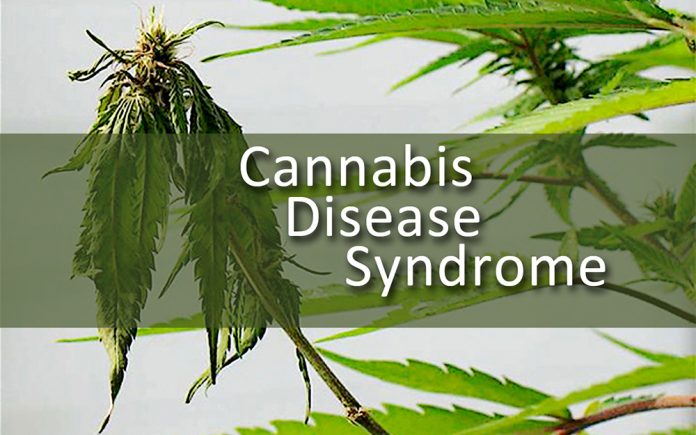
How Viruses Threaten the Cannabis Industry
As with the novel coronavirus pandemic harmful viruses emerge and adapt in nature, and this is not exclusive to humans. So says Robert C Clarke, Mojav Richmond and Ali Bektas in their article titled “The Threat of Viral Cannabis Diseases,” published in the August 2020 issue of Cannabis Business Times. Clarke, et. al. takes us on a walk throughout their cannabis grow to demonstrate how the industry is becoming more aware of a condition they call Cannabis Disease Syndrome (CDS). CDS exhibits consistent symptoms not from nutrient deficiencies but from other known pathogens.
In the 1980’s root cuttings became popular as a vegetative reproduction method. Growers occasionally would see a clone that became weaker and less productive each time cuttings were flowered. They called this a “photocopy effect” meaning it was coping a copy of a copy resulting in a cutting that is a mere ghost of the original. Collectively this is referred to as “dudding” or “dudders” as a plant is a dud.
Growers began to realize symptoms were caused by transmission of an infectious disease that became more and more prevalent through successive rounds of multiplication. Vegetative plants can transmit CDS while flowering plants are more likely to suffer the consequences. CDS and COVID-19 is similar in that asymptomatic plants can infect the otherwise healthy with more serious outcomes. CDS spreads most quickly by taking cuttings from infected plants using them as mother plants and thereby multiplying the disease through future generations.
Clark’s article continues to share likely pathogens. Candidates include viral infection accompanied by opportunistic fungal and bacterial infections. Cannabis Cryptic Virus (CanCV) identified in European industrial hemp cultivars, are easily confused with tobacco viruses. Lettuce Chlorosis Virus (LCV) was found in Israeli glasshouse cannabis crops. In the Spring of 2019 a Hop Latent Viroid (HpLVd) was found in several California sinsemilla clones and is the prime suspect for the causal pathogen of CDS today. HpLVd is symptomless in hop cultivars.
How do you know your plants have CDS?
Plants infected with CDS exhibit lowered productivity from loss of vigor, slower growth, smaller flowers, slowed resin gland development, yellowing of foliage, discolored mosaic blotches, and deformed leaf margins. Some other infected plants appear heathy, with darker green leaves, and increased branching. Molecular testing by experienced labs is the only way to verify the presence of HpLVd.
How do you eliminate CDS from your grow?
Mitigation and suppression of CDS is like the novel corona virus. Identify with testing, trace for the source, quarantine infected from uninfected plants, and destroy affected plants. Clarke believes most grows become infected by taking cuttings from others. Clarke outlines these measures:
- Control pests: aphids, white flies thrips and mites transmit viruses.
- Keep your grow clean: plant’s vascular system is susceptible to infection. Just like getting rid of any human pest we disinfect, use sterile utensils, household bleach to clean and wipe down benches and containers, and sterile media for rooting, cutting and growing flowers. Wash hands change gloves before moving to another plant. (where have we heard that before).
- Quarantine as necessary: sterile quarantine for new arrivals
- Limit visits to the area: Keep people who have been in contact with potentially infected plants, especially other growers out of your quarantine and propagation areas.
- Destroy affected plants: Always number and tag cuttings so you can trace which mother plant they came. Use fresh blades when taking cuttings from each mother plant.
It is possible to outgrow infected plants under vegetative daylength. The more cuttings a grower roots, the higher the chances of selecting a clean one. Unsanitary cuttings are the main cause of Cannabis diseases. Growing from seeds will eliminate CDS. These instructions are for home growers also not just commercialized growers.
Address comments to info@ruthahillrn.com










































